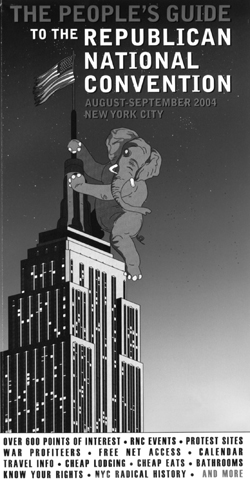| |
|
|
|
|
Artwatch |
 As
we go to press, the city of New York welcomes the Republican National Convention
(RNC) to Madison Square Garden starting on August 30, and ending September 2,
the city�s art community, from small galleries, artists� bars to major museums,
will set the stage for a fierce aesthetic/political protest. Even the Whitney
Museum got into the fever. The museum curated a film series titled �War! Protest
in America� featuring films that addressed issues of protest during the Vietnam
War.
As
we go to press, the city of New York welcomes the Republican National Convention
(RNC) to Madison Square Garden starting on August 30, and ending September 2,
the city�s art community, from small galleries, artists� bars to major museums,
will set the stage for a fierce aesthetic/political protest. Even the Whitney
Museum got into the fever. The museum curated a film series titled �War! Protest
in America� featuring films that addressed issues of protest during the Vietnam
War. Web Sites of Interest:www.vanbruntgallery.comwww.schroederromero.com www.creativetime.org www.rncguide.com |
| |
|
|
|
|